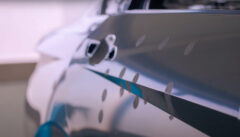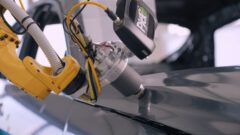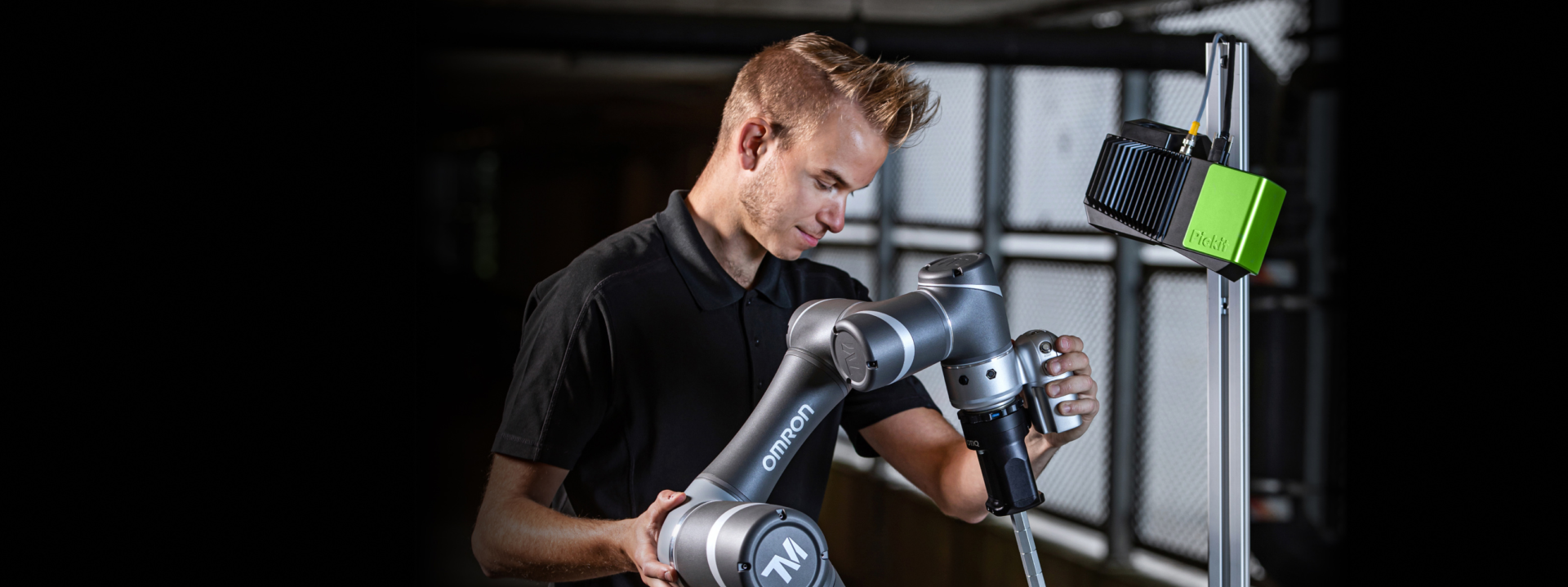3D Robot Vision Efficiently Removing Dust Spots on Cars
Automotive surface finishing has compelling challenges, including the removal of dust spots on a car's bodywork before the final paint job. The manual task of removing these dust spots is not only laborious but also repetitive, and highly demanding from the team of typically four or more operators per vehicle. And yet, automating this straining job poses a challenge in itself. Considering the minuscule size of the dust spots, automation requires precise knowledge
regarding the exact location of the dust spot and the car, along with understanding the profile of these dust spots for their effective removal.

Responding to this challenge, a ground-breaking automation solution was proposed by Pickit 3D for Hyundai in Korea. The Pickit 3D robot vision software platform, designed to handle complex surface treatment applications, combined with M-HD2 industrial-grade robot mounted cameras, is able to perform the dust spot removal job immaculately and more efficiently than before.
Labor intensive manual dust spot removal
Robots and automation play a crucial part in automobile production. This is especially true for more difficult jobs involving the carrying of heavier parts. However, there are still some areas of fine-tuning that require extremely high levels of accuracy and are often carried out by skilled human operators. One example is the elimination of dust spots between coating procedures before the final painting.

Several coating processes take place during car assembly before the final paint coat is applied. The final paint coat must be free of stains and imperfections. Although assembly plants have advanced air management systems, dust cannot be totally eliminated.
When the car body leaves the priming coat bay, tiny dust particles may fall on the drying primer coat. If these dust spots are not eliminated, the final coat's quality suffers. Until now, these dust spots were located by a team of line operators who searched for them visually and by using specialized equipment. It is time-consuming and tough work because it is not particularly engaging and requires a lot of concentration. As dust spots are discovered, the operator manually sands them away.
Automation requiring absolute and consistent accuracy
This is an operation that would undoubtedly benefit from an automated removal process utilizing robotics. However, one issue here is the absolute location of the car body when it comes to a stop for dust spot removal. While the conveyor and robot systems are accurate, it is difficult to achieve consistent accuracy down to millimeter levels. To offer the required quality and reliability, the system requires an absolute reference location for the robots and sanding effectors to relate to, allowing them to sand precisely where the dust has landed. Pickit 3D offered a unique response to this daunting automation challenge, which could be a world first for the automotive industry.

3D robot vision indeed offers an entirely new way of automating surface treatment and dispensing processes. It adds unparalleled flexibility and intelligence to challenging production processes such as sanding, deburring, sealing, gluing or painting.
For Hyundai, Pickit 3D devised a solution employing both 2D and 3D machine vision technology. As the car body leaves the primer coat bay, high-resolution 2D imaging is used to identify the dust spots. When the car stops at the sanding bay, this dust spot location information is used together with robot-mounted M-HD2 cameras, 4 in total. The robots can then scan the areas of interest and obtain very precise information on the location and all-important depth information to carry out the sanding operation effectively.
The Pickit 3D solution uses smart technology to detect complex-shaped parts and guide a robot to process them. It is very easy to install, requires very low maintenance and can be seamlessly integrated with various industrial robot types and automation processes.
More efficiency and accuracy, less straining labor tasks and waste
Hyundai's approach is considered a world first for this type of application. Because of the high requirements for precision and accuracy, removing dust spots on automobile body primers has traditionally required a team of competent, highly experienced workers. It has been considered one of the most challenging automation tasks to switch from human labor to robots equipped with 3D robot vision.
Since its implementation, the solution has achieved remarkably high levels of success and is significantly more accurate than the previous approach. The very high 3D imaging performance, state-of-the art 3D robot vision platform capabilities, along with an industrial grade robot-mounted operation, has made Hyundai's automotive line even more efficient, productive, and, not insignificantly, more sustainable, with less waste and energy used per manufacturing unit.
